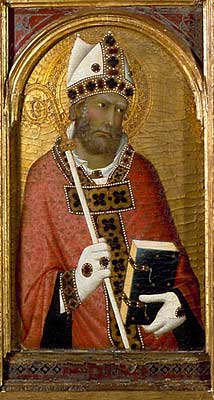|
The Rest On The Flight Into Egypt (Algardi)
''The Rest on the Flight into Egypt'' is a c.1640 gilt-bronze relief by Alessandro Algardi. It and its companion piece ''The Martyrdom of St Paul'' are both contemporary replicas of the artist's reliefs accompanying the same artist's ''The Martyrdom of St Paul'', a marble group for San Paolo Maggiore in Bologna. Both replicas are both now in the Victoria and Albert Museum, whilst a second version of ''Rest'' is now in the Fitzwilliam Museum in Cambridge. References {{DEFAULTSORT:Rest on the FLight into Egypt Flight into Egypt in art 1640s sculptures Statues of the Madonna and Child Reliefs in the United Kingdom Sculptures of the Victoria and Albert Museum ... [...More Info...] [...Related Items...] OR: [Wikipedia] [Google] [Baidu] |
Alessandro Algardi
Alessandro Algardi (July 31, 1598 – June 10, 1654) was an Italian high-Baroque sculptor active almost exclusively in Rome, where for the latter decades of his life, he was, along with Francesco Borromini and Pietro da Cortona, one of the major rivals of Gian Lorenzo Bernini. He is now most admired for his portrait busts that have great vivacity and dignity. Early years Algardi was born in Bologna, where at a young age, he was apprenticed in the studio of Agostino Carracci. However, his aptitude for sculpture led him to work for Giulio Cesare Conventi (1577–1640), an artist of modest talents. His two earliest known works date back to this period: two statues of saints, made of chalk, in the Oratory of Santa Maria della Vita in Bologna. By the age of twenty, Ferdinando I, Duke of Mantua, began commissioning works from him, and he was also employed by local jewelers for figurative designs. After a short residence in Venice, he went to Rome in 1625 with an introduction from th ... [...More Info...] [...Related Items...] OR: [Wikipedia] [Google] [Baidu] |
San Paolo Maggiore, Bologna
San Paolo Maggiore, also known as San Paolo Decollato, is a Baroque-style, Roman Catholic basilica church located on Via Carbonari #18 in Bologna, region of Emilia-Romagna, Italy. History The church was commissioned between 1606 and 1611 by the Barnabites from the architect Ambrogio Magenta or Mazenta. Patronage for this church was mainly derived from the Prince Virgilio Spada, brother of Cardinal Bernardino Spada. The Barnabites, also known as the ''Clerics Regular of St Paul'', named this church as ''Maggiore'' to distinguish it from two other San Paolo's in Bologna. Between 1634 and 1636 the facade was built to designs by Ercole Fichi. The facade, in brick and stone, has statues of ''St Peter'' and ''Paul'', respectively by Domenico Maria Mirandola and G. Cruventi. During the Napoleonic invasion, the Barnabites were suppressed, and the church was made a parish church in 1819. Closed again later, it was reconsecrated in 1878. In 1959 it was restored to the Barnabites, and two ... [...More Info...] [...Related Items...] OR: [Wikipedia] [Google] [Baidu] |
Bologna
Bologna (, , ; egl, label= Emilian, Bulåggna ; lat, Bononia) is the capital and largest city of the Emilia-Romagna region in Northern Italy. It is the seventh most populous city in Italy with about 400,000 inhabitants and 150 different nationalities. Its metropolitan area is home to more than 1,000,000 people. It is known as the Fat City for its rich cuisine, and the Red City for its Spanish-style red tiled rooftops and, more recently, its leftist politics. It is also called the Learned City because it is home to the oldest university in the world. Originally Etruscan, the city has been an important urban center for centuries, first under the Etruscans (who called it ''Felsina''), then under the Celts as ''Bona'', later under the Romans (''Bonōnia''), then again in the Middle Ages, as a free municipality and later ''signoria'', when it was among the largest European cities by population. Famous for its towers, churches and lengthy porticoes, Bologna has a well-preserved ... [...More Info...] [...Related Items...] OR: [Wikipedia] [Google] [Baidu] |
Victoria And Albert Museum
The Victoria and Albert Museum (often abbreviated as the V&A) in London is the world's largest museum of applied arts, decorative arts and design, housing a permanent collection of over 2.27 million objects. It was founded in 1852 and named after Queen Victoria and Prince Albert. The V&A is located in the Royal Borough of Kensington and Chelsea, in an area known as "Albertopolis" because of its association with Prince Albert, the Albert Memorial and the major cultural institutions with which he was associated. These include the Natural History Museum, the Science Museum, the Royal Albert Hall and Imperial College London. The museum is a non-departmental public body sponsored by the Department for Digital, Culture, Media and Sport. As with other national British museums, entrance is free. The V&A covers and 145 galleries. Its collection spans 5,000 years of art, from ancient times to the present day, from the cultures of Europe, North America, Asia and North Africa. Ho ... [...More Info...] [...Related Items...] OR: [Wikipedia] [Google] [Baidu] |
Fitzwilliam Museum
The Fitzwilliam Museum is the art and antiquities museum of the University of Cambridge. It is located on Trumpington Street opposite Fitzwilliam Street in central Cambridge. It was founded in 1816 under the will of Richard FitzWilliam, 7th Viscount FitzWilliam (1745–1816), and comprises one of the best collections of antiquities and modern art in western Europe. With over half a million objects and artworks in its collections, the displays in the museum explore world history and art from antiquity to the present. The treasures of the museum include artworks by Monet, Picasso, Rubens, Vincent van Gogh, Rembrandt, Cézanne, Van Dyck, and Canaletto, as well as a winged bas-relief from Nimrud. Admission to the public is always free. The museum is a partner in the University of Cambridge Museums consortium, one of 16 Major Partner Museum services funded by Arts Council England to lead the development of the museums sector. Foundation and buildings The museum was founded ... [...More Info...] [...Related Items...] OR: [Wikipedia] [Google] [Baidu] |
Flight Into Egypt In Art
Flight or flying is the process by which an object moves through a space without contacting any planetary surface, either within an atmosphere (i.e. air flight or aviation) or through the vacuum of outer space (i.e. spaceflight). This can be achieved by generating aerodynamic lift associated with gliding or propulsive thrust, aerostatically using buoyancy, or by ballistic movement. Many things can fly, from animal aviators such as birds, bats and insects, to natural gliders/parachuters such as patagium, patagial animals, anemochorous seeds and ballistospores, to human inventions like aircraft (airplanes, helicopters, airships, balloons, etc.) and rockets which may propel spacecraft and spaceplanes. The engineering aspects of flight are the purview of aerospace engineering which is subdivided into aeronautics, the study of vehicles that travel through the atmosphere, and astronautics, the study of vehicles that travel through space, and ballistics, the study of the flight of ... [...More Info...] [...Related Items...] OR: [Wikipedia] [Google] [Baidu] |
1640s Sculptures
Year 164 ( CLXIV) was a leap year starting on Saturday (link will display the full calendar) of the Julian calendar. At the time, it was known as the Year of the Consulship of Macrinus and Celsus (or, less frequently, year 917 ''Ab urbe condita''). The denomination 164 for this year has been used since the early medieval period, when the Anno Domini calendar era became the prevalent method in Europe for naming years. Events By place Roman Empire * Emperor Marcus Aurelius gives his daughter Lucilla in marriage to his co-emperor Lucius Verus. * Avidius Cassius, one of Lucius Verus' generals, crosses the Euphrates and invades Parthia. * Ctesiphon is captured by the Romans, but returns to the Parthians after the end of the war. * The Antonine Wall in Scotland is abandoned by the Romans. * Seleucia on the Tigris is destroyed. Births * Bruttia Crispina, Roman empress (d. 191) * Ge Xuan (or Xiaoxian), Chinese Taoist (d. 244) * Yu Fan, Chinese scholar and offi ... [...More Info...] [...Related Items...] OR: [Wikipedia] [Google] [Baidu] |
Statues Of The Madonna And Child
A statue is a free-standing sculpture in which the realistic, full-length figures of persons or animals are carved or cast in a durable material such as wood, metal or stone. Typical statues are life-sized or close to life-size; a sculpture that represents persons or animals in full figure but that is small enough to lift and carry is a statuette or figurine, whilst one more than twice life-size is a colossal statue. Statues have been produced in many cultures from prehistory to the present; the oldest-known statue dating to about 30,000 years ago. Statues represent many different people and animals, real and mythical. Many statues are placed in public places as public art. The world's tallest statue, ''Statue of Unity'', is tall and is located near the Narmada dam in Gujarat, India. Color Ancient statues often show the bare surface of the material of which they are made. For example, many people associate Greek classical art with white marble sculpture, but there is evidenc ... [...More Info...] [...Related Items...] OR: [Wikipedia] [Google] [Baidu] |
Reliefs In The United Kingdom
Relief is a sculptural method in which the sculpted pieces are bonded to a solid background of the same material. The term '' relief'' is from the Latin verb ''relevo'', to raise. To create a sculpture in relief is to give the impression that the sculpted material has been raised above the background plane. When a relief is carved into a flat surface of stone (relief sculpture) or wood ( relief carving), the field is actually lowered, leaving the unsculpted areas seeming higher. The approach requires a lot of chiselling away of the background, which takes a long time. On the other hand, a relief saves forming the rear of a subject, and is less fragile and more securely fixed than a sculpture in the round, especially one of a standing figure where the ankles are a potential weak point, particularly in stone. In other materials such as metal, clay, plaster stucco, ceramics or papier-mâché the form can be simply added to or raised up from the background. Monumental bronze relief ... [...More Info...] [...Related Items...] OR: [Wikipedia] [Google] [Baidu] |





